This delightful home sits in a small patch of woods two blocks away from the University of North Carolina Campus in Chapel Hill. Completed in 1955, it was designed for the Julian family by notable mid-century architect George Matsumoto.
The first thing you’re likely to admire about this original mid-century home is the abundance of wood panelling and other woodwork running throughout the house. This begins with the exterior, which features thinly-spaced vertical wood panels, stained in a rich red polish.
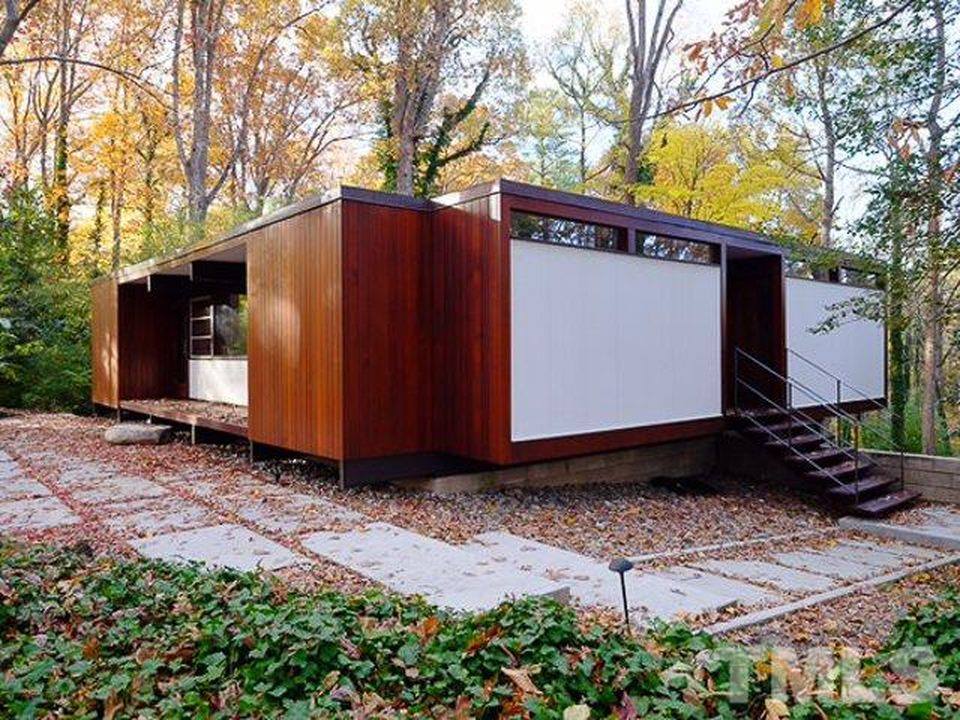
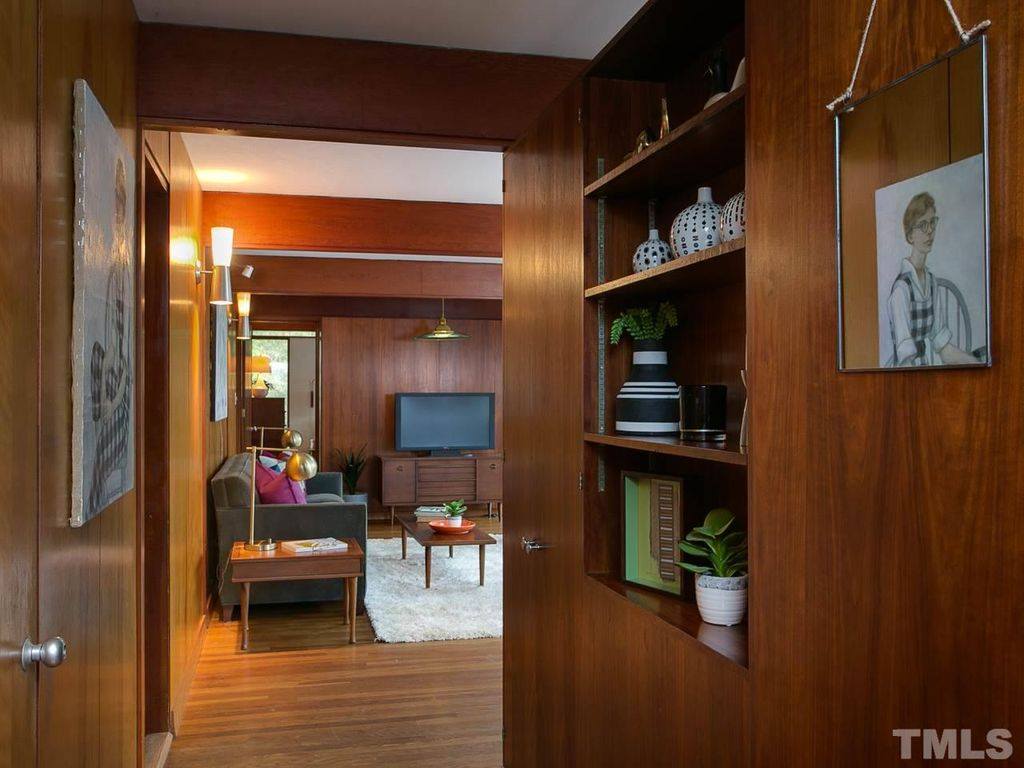
As you enter the home, the thin panels make way for wider panelling, stained in a lighter brown polish. These panels run throughout the interior, and provide more than enough texture on their own, meaning that other decoration is allowed to be kept to a bare minimum.
ALSO READ: This Original Two-Story Mid-Century Home Goes a Long Way
As such, this panelling is accompanied by some really nice, simple Danish modern cabinetry. The television in the living room sits atop a quintessentially Danish modern cabinet, polished to precisely match the wood panel wall which it sits in front of. There’s also a coffee table in the middle of the room, and a table beside the sofa, both beautiful in their straightforward simplicity.
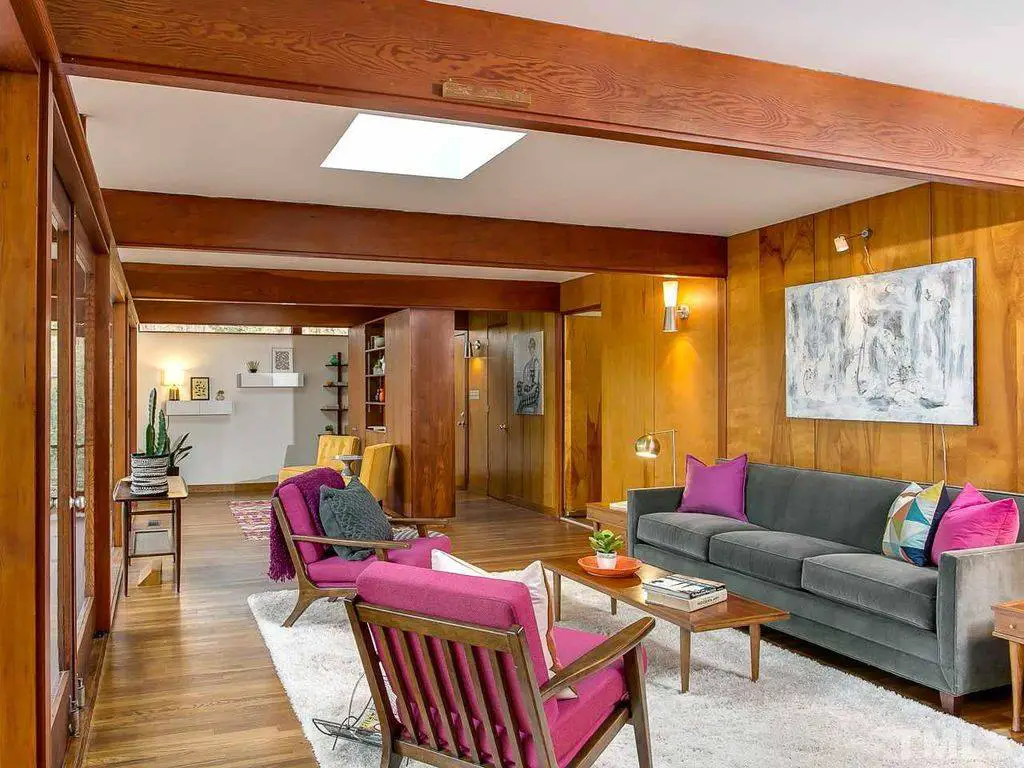
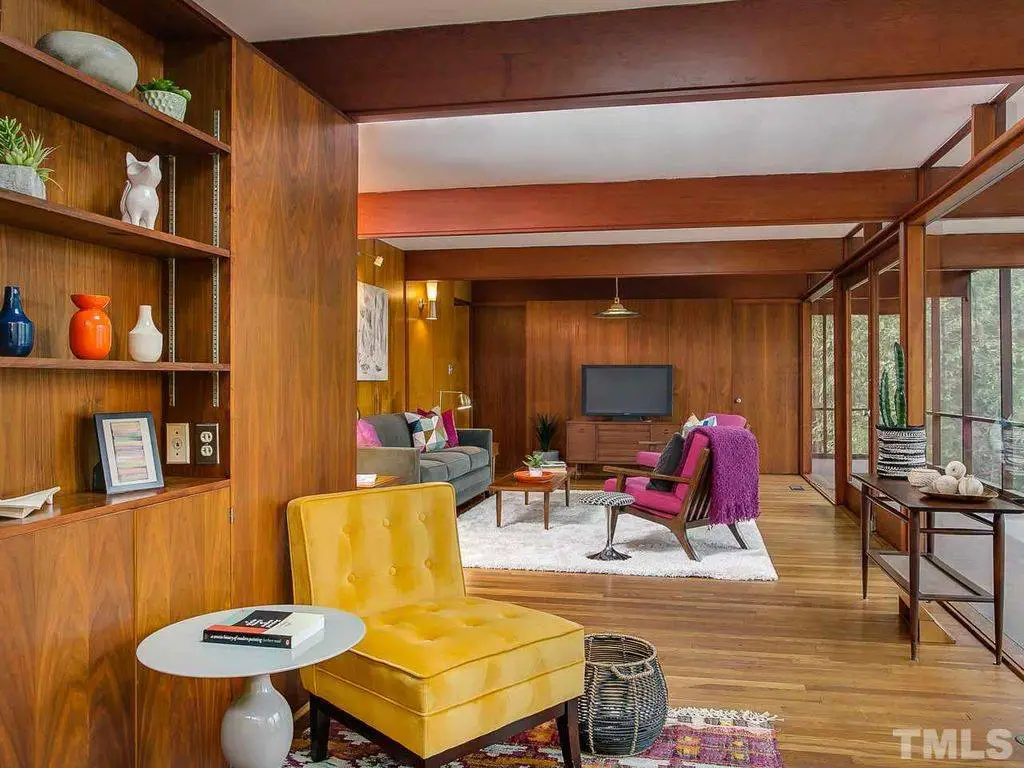
True to Matsumoto’s own heritage, there’s a clear Japanese quality to this mid-century modern house. You can see this in the fluid division of interior space, and the fact that the ornamentation follows rather than hides the structure.
ALSO READ: This Mid-Century House in Beaumaris, Australia, Could Not Find Better Owners
But more obviously, several of the walls feature the same translucent paper, with polished wooden frame, which is such a mainstay of Japanese design. Generally, this combination of white-painted walls broken up by wooden structural elements—featured across both interior and exterior—is an unmistakeable signifier of Japanese influence.
ALSO READ: Architect James R. Harlan Found His Mid-Century Modern Heaven in Palms Springs
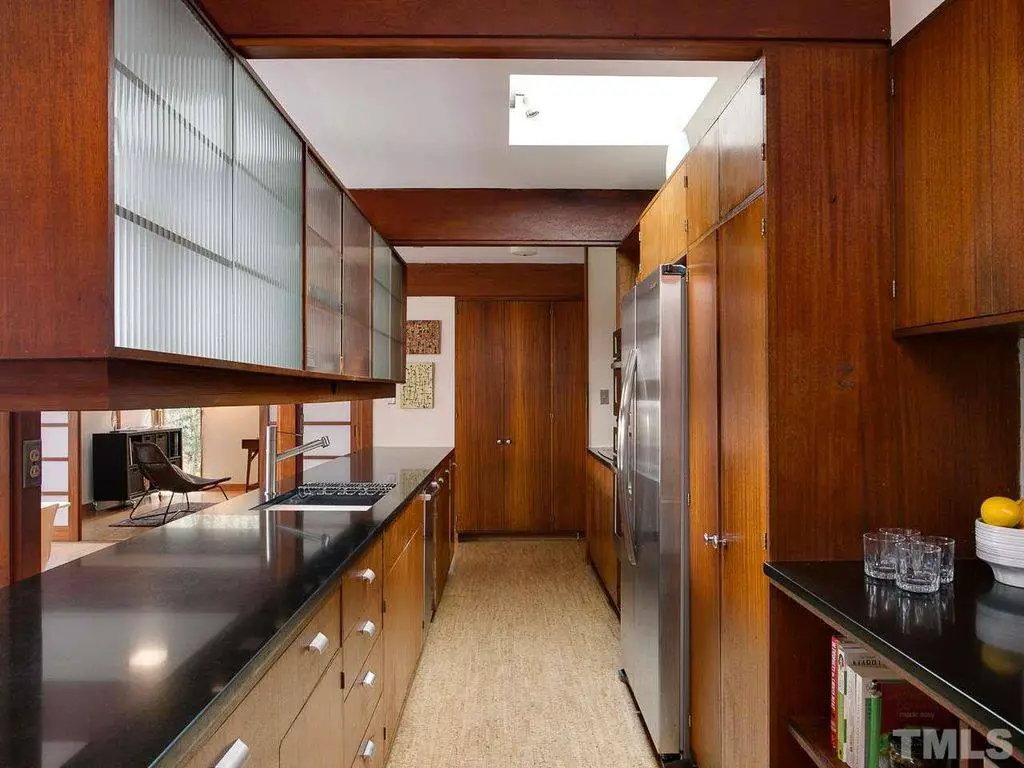
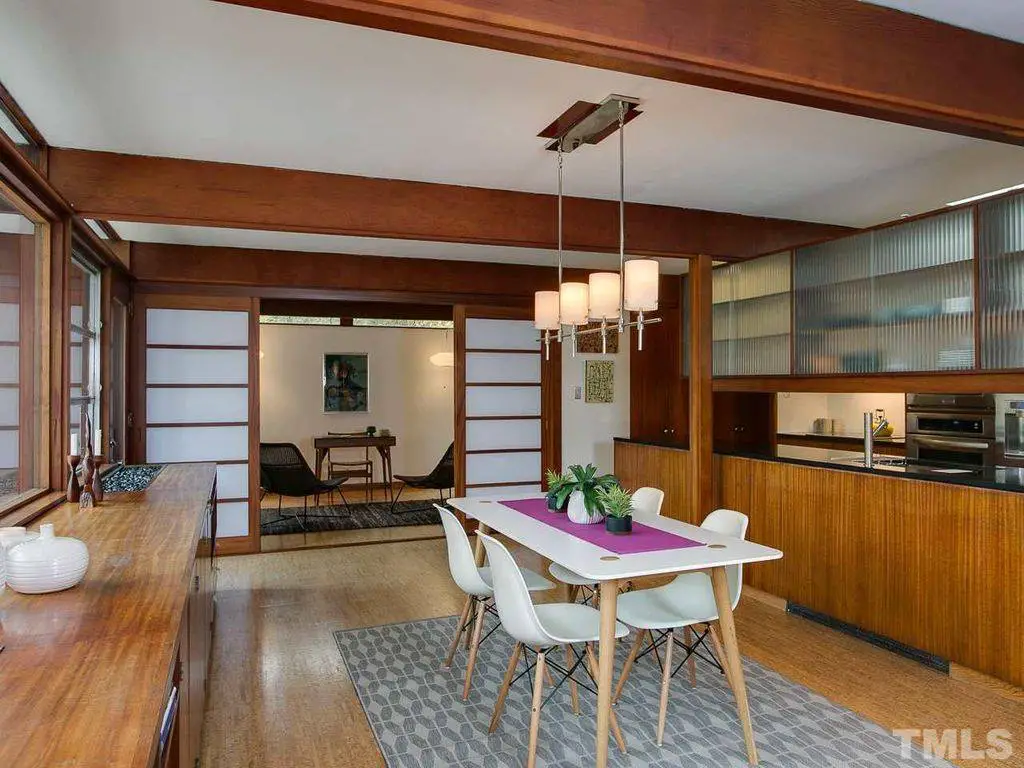
One last point, the choice of having the home situated on a hillside allows for a lower level which is concealed from initial view. This has the really pleasing effect of preserving the continuity of the upper level, giving it the sense of being a single, clean rectangular box. It’s something we noticed in another house covered recently, Philip Johnson’s Booth House.
In both cases, it’s a really brilliant means of achieving the twin aims or formal purity and spaciousness, aims which are always so crucial to the best mid-century design.
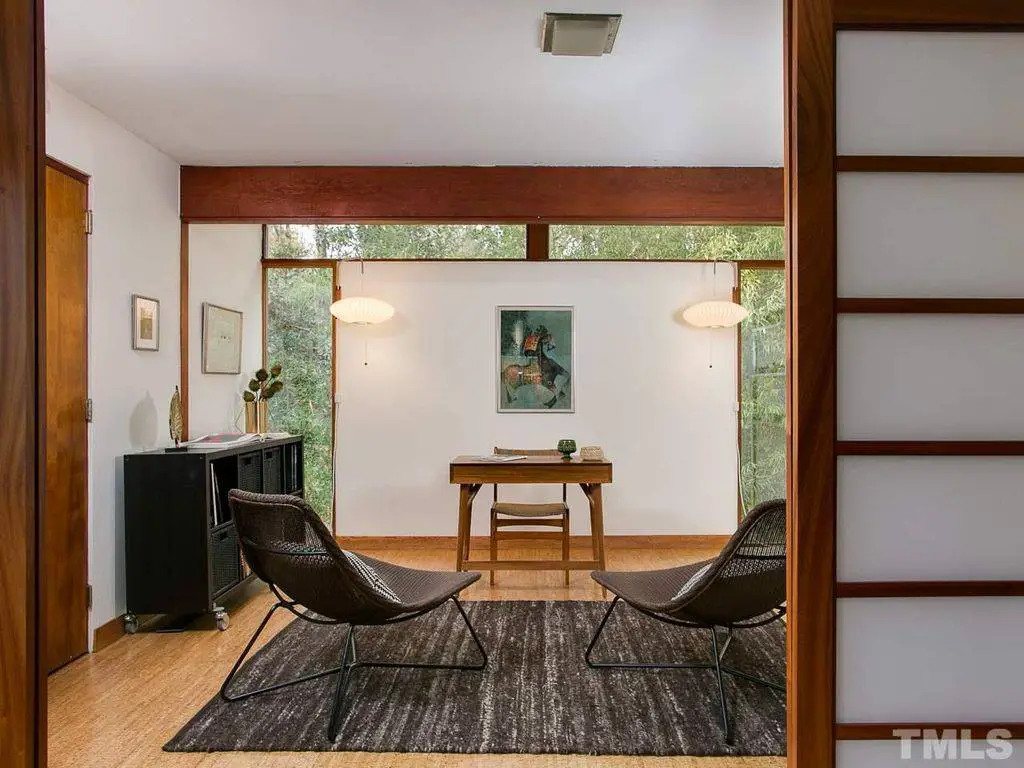
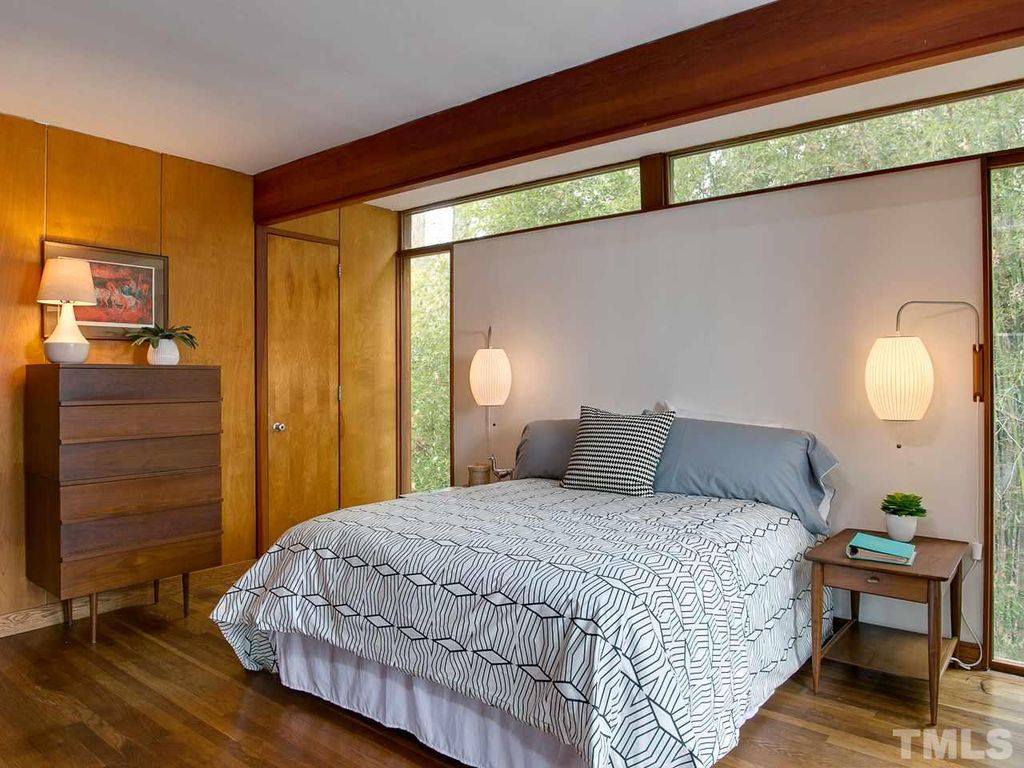
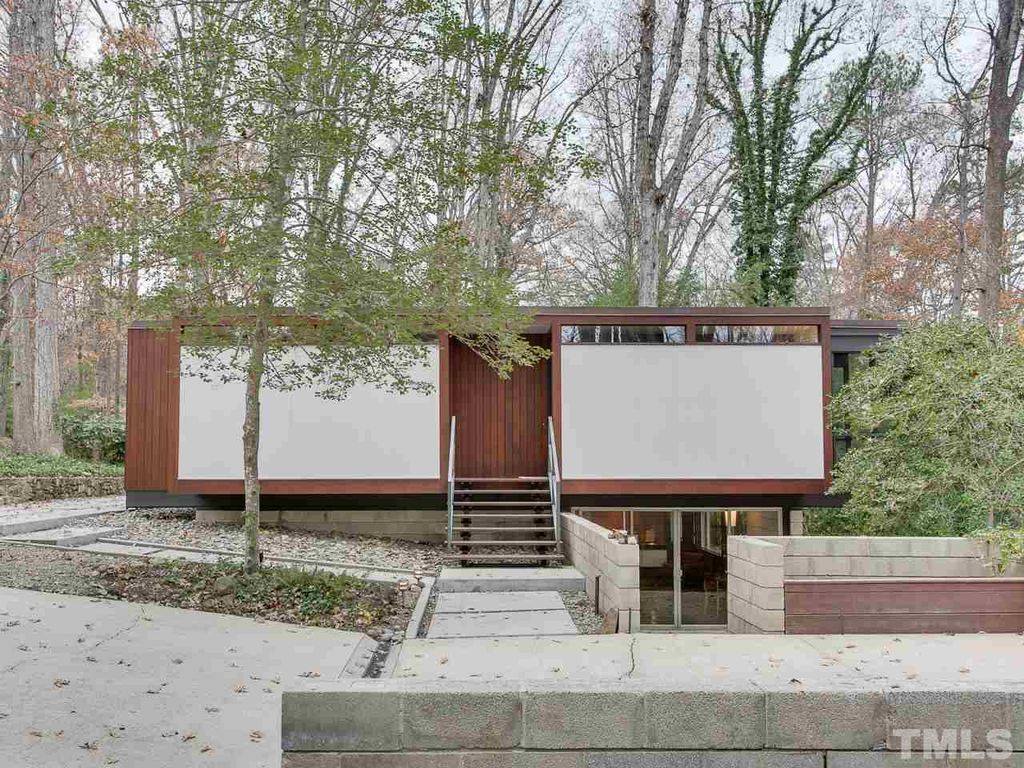
Photos via Facebook Page “For The Love Of Old Houses”